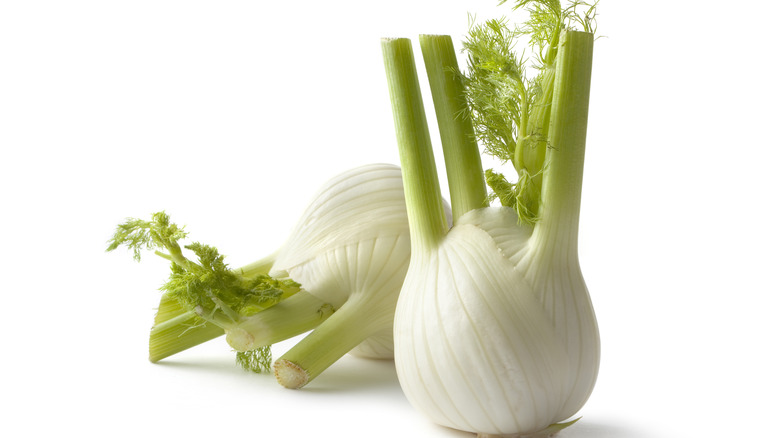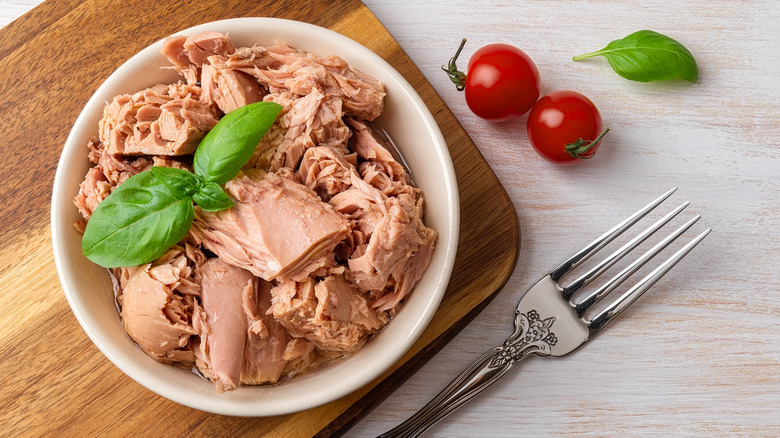Fennel Is The Crunchy Ingredient That Makes Tuna Salad Stand Out
If you're going to start naming vegetables, most people are likely to come up with things like broccoli, carrots, green beans, cauliflower, brussels sprouts, etc. But there are many more vegetables out there, and one of the most interesting ones you can buy is fennel, a beautifully versatile vegetable with a distinct, yet not overpowering taste. Its mild yet unique flavor, along with its distinctive crunchy texture, means that it blends with a lot of other foods while also providing a textural counterpoint to those that need it. That's why it's so great in tuna salad in particular, and why you should absolutely be giving that a try to spice up a familiar comfort meal.
The biggest benefit of fennel in tuna salad is the textural element fennel brings to the table. Many tuna salad recipes call for celery to provide some crunch to the otherwise somewhat mushy texture (chicken and egg salads often feature it for the same reason). Both fennel and celery can provide that — but while celery doesn't really have much of a taste on its own, fennel's flavor is distinct enough that it can help amp up a tuna salad in ways celery can't.
Fennel's crunch is a great addition to tuna salad
For all that it looks like an allium, fennel is nothing like onions, garlic, or leeks — it's actually a member of the carrot family. And much like many of its cousins, fennel's uses are pretty diverse (it goes great in tomato sauce, for example). Fennel has actually been around a long time, even if its rise to prominence on American restaurant menus is more recent. It's long been a crucial ingredient in Italian cuisine, it's a key part of Chinese Five Spice (though it's typically only eaten in Southern China), and in India, fennel seeds are used as a post-meal breath freshener. But it has all sorts of applications even outside its more traditional uses.
The reason it shows up all over the place is the key to fennel's success: Its flavor is both gentle and distinct, and it doesn't need much help to bring its strengths to the table. Put it in a dish and it'll pretty much take care of itself without any other additions needed to get the most out of it.
Fennel is compared to licorice, but its flavor is unique
The thing about the flavor of fennel is it's hard to describe. People usually default to "licorice," because it has some of the same compound (anethole) present in licorice and anise, albeit in much smaller amounts. However, the taste of licorice in fennel is so mild that, even in its purest form, you might not detect it at all. When you add fennel bulb to your tuna salad, it isn't going to taste anything like black licorice.
There are, however, other types of fennel which may have a different effect on tuna salad. Fennel seeds have a more concentrated flavor and might set off your licorice sense more. Ground fennel is likewise much more concentrated than fennel bulb. If you want a stronger licorice flavor, you'll want one of these two products rather than pieces of the bulb. You could even use fennel fronds in tuna salad, creating somewhat of a similar textural effect to herbs like dill. Of course, none of these options are going to give you that signature crunch you might be looking for.
The key to knowing which part to use is what exactly you want to get out of it. Whichever you pick, though, fennel can help put a fresh spin on an old dish and make lunchtime much more interesting.


